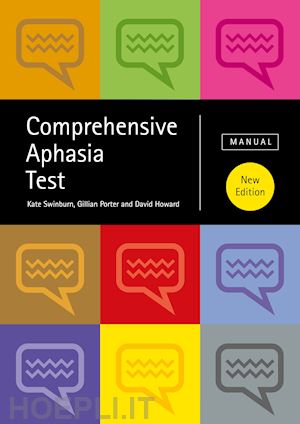The Comprehensive Aphasia Test (CAT) is a test for use with people who have acquired aphasia, that can be completed over one or two assessment sessions. The test includes a user manual, a cognitive screen and language battery, and a scoring booklet, which are all unchanged since the previous edition, and - new to this release - a concise Aphasia Impact Questionnaire which replaces the Disability Questionnaire. The cognitive section assesses people's abilities across a range of task that can affect rehabilitation. Forming the main body of the test, the language battery provides a profile of performance across all modalities of language production and comprehension. The Aphasia Impact Questionnaire is a pictorial Patient Reported Outcome Measure, which produces both qualitative and quantitative information. It was co-produced with people with aphasia. It supports the person with aphasia to give a subjective rating of how language difficulties identified in the Language Battery affect their daily life, enabling first steps towards goal setting. By capturing this information, the CAT helps the therapist track changes over the course of recovery and provides a guide to likely outcomes on the basis of an early assessment. The first two sections of the CAT are supported by normative data on people both with and without aphasia, and extensive data on reliability and clinical validity. The CAT allows users to: Identify underlying impairments Find where to focus assessments using PALPA and other batteries Ascertain the practical, psychological, and social impact of aphasia, from the perceptive of the person with aphasia Create a profile of strengths and weaknesses to guide therapy. Structured around fully up-to-date models of language assessment, from cognitive neuropsychology to patient reported outcome measures, test is an indispensable resource for speech and language therapists and researchers. It provides as much information about people's language ability as possible in a relatively brief test designed to be completed in 90-120 minutes. Additional scoring booklets can be ordered in packs of 10 at https://www.routledge.com/Comprehensive-Aphasia-Test-Scoring-Book-pack-of-10/Swinburn-Porter-Howard/p/book/ 9781032128177











